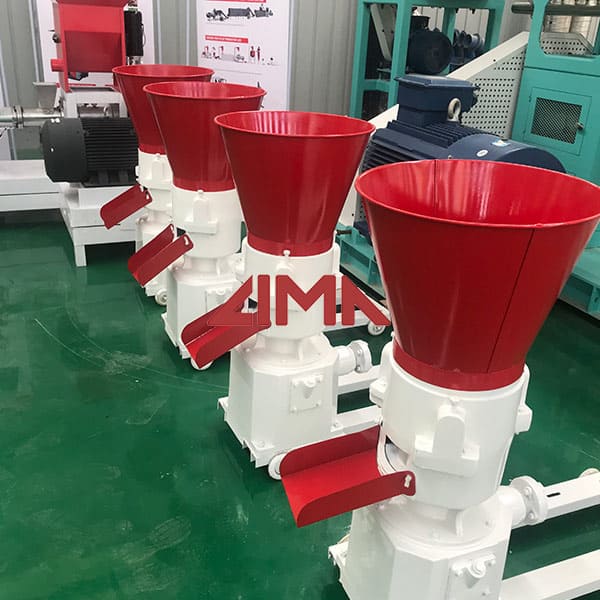
Metrics - Bacillus as an aquaculture friendly microbe | SpringerLink

2021-1-9·Bacillus species are Gram-positive, endospore-forming bacteria having a vital role in the sustainable aquaculture production. Bacillus as gut probiotic significantly enhances growth, immune response, and disease resistance in several aquatic cultured organisms. The supplementation of Bacillus as pond probiotics or bioremediator aids to …

2019-11-26·E. coli, Salmonella, Pseudomonas, Streptococcus and Vibrio, are more common each day in shrimp and fish aquaculture because (a) anthropogenic activities have been increasing near farms, (b) ponds poor management and (c) non-safe animal ingredients utilization in diets (Balcazar et al. 2007; Lee et al. 2014; Liu et al. 2015).In …

2013-9-5·Brevibacillus laterosporus, a bacterium characterized by the production of a unique canoe-shaped lamellar body attached to one side of the spore, is a natural inhabitant of water, soil and insects. Its biopesticidal potential has been reported against insects in different orders including Coleoptera, Lepidoptera, Diptera and against nematodes and …

2006-11-1·The use of probiotics such as lactic acid bacteria and Bacillus has had positive results. The advantages of the use of probiotics might be obtained by some specific modes of action, which are described below. Stimulating the immunity of the host. There are many reports that some bacterial compounds act as an immunostimulant in fish and shrimp.

2021-10-23·Approximately 12% of the tested Bacillus spp. fish isolates (FI). were able to interfere with synthetic QS molecules. Ten isolates were further selected as producers of extracellular QQ-molecules and their QQ capacity was evaluated against the QS of important aquaculture bacterial pathogens, namely Aeromonas spp., Vibrio spp., …

2020-8-2·Bacillus laterosporus (PTCC 1486) and Bacillus megaterium (PTCC1656) were used as probiotic strains. Detection of hly, plc, inlA genes by PCR. DNA was extracted by boiling method. The presence of hly, plc and inlA gene fragments were determined by PCR using specific primers as listed in Table 1. PCR reaction was performed at 95° C for …

2002-8-30·In much of the world, however, the shrimp aquaculture industry is beset by disease, mostly due to bacteria (especially the luminous Vibrio harveyi) and viruses. The high density of animals in hatchery tanks and ponds is conducive to the spread of pathogens, and the aquatic environment, with regular applications of protein-rich feed, is …

2015-5-18·The dietary supplementation of Bacillus spp. in fish culture improved especially growth performance, immune response ... The results showed that the administration of Bacillus bacteria to shrimp resulted in ... specific immune parameters content) and enhance the antioxidant ability of grass carp. Wang & Xu (2006) found that …

2023-2-15·Also, supplementation with enzymes can help to eliminate the effects of antinutritional factors and improve the utilization of dietary energy and amino acids, resulting in improved performance of fish/shrimps (Farhangi and Carter, 2007; Lin et al., 2007; Soltan, 2009). The primary purpose of enzyme application in feeds is to improve digestion.

2021-1-9·Bacillus species are Gram-positive, endospore-forming bacteria having a vital role in the sustainable aquaculture production. Bacillus as gut probiotic significantly enhances growth, immune response, and disease resistance in several aquatic cultured organisms. The supplementation of Bacillus as pond probiotics or bioremediator aids to …

2019-4-7·Abstract. Species of Bacillus are spore-forming bacteria that are resistant to aggressive physical and chemical conditions, with various species showing unusual physiological features enabling them to survive in various environmental conditions including fresh waters, marine sediments, desert sands, hot springs, Arctic soils, and the …

2020-11-1·1. Introduction. The intensive culture of aquatic organisms to meet the demands of the ever-growing human population has been coupled with several challenges (Edwards, 2015).Aquaculture can impact the environment negatively through the spread of diseases, wetlands and mangroves destruction, declined biodiversity of natural fish …

2015-5-31·A low number of listeriosis outbreaks have been linked to the consumption of fish and fish products in comparison to other foods (EFSA and ECDC 2015).However, phenotypic and genetic characterization through subtyping analysis indicates fish as an important source of infection (Jami et al. 2014). L. monocytogenes is divided into at least …

2020-1-17·Aeromonas. The genus Aeromonas includes various groups of straight coccobacillary to bacillary gram-negative bacteria that occur commonly in aquatic ecosystems and are sometimes isolated from food products (Hatje et al. 2014). Aeromonas are disease-causing pathogens of fish and other cold-blooded species and are as well …
![<h3>[PDF] Genus bacillus, promising probiotics in aquaculture: …</h3>](/wp-content/themes/lima/load/50/feed mixer machine11.jpg)
2019-4-7·Probiotic Bacillus can also assist in maintaining a higher density of beneficial bacteria and a lower load of pathogenic agents in aquaculture ponds. Much is still unknown, however, about how the probiotic efficacy of specific Bacillus species is affected by different aquatic animal species, age and growth condition, water quality, and diet.

2006-11-1·The use of probiotics such as lactic acid bacteria and Bacillus has had positive results. The advantages of the use of probiotics might be obtained by some specific modes of action, which are described below. Stimulating the immunity of the host. There are many reports that some bacterial compounds act as an immunostimulant in fish and shrimp.

2013-9-5·Brevibacillus laterosporus, a bacterium characterized by the production of a unique canoe-shaped lamellar body attached to one side of the spore, is a natural inhabitant of water, soil and insects. Its biopesticidal potential has been reported against insects in different orders including Coleoptera, Lepidoptera, Diptera and against nematodes and …